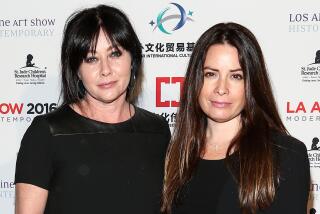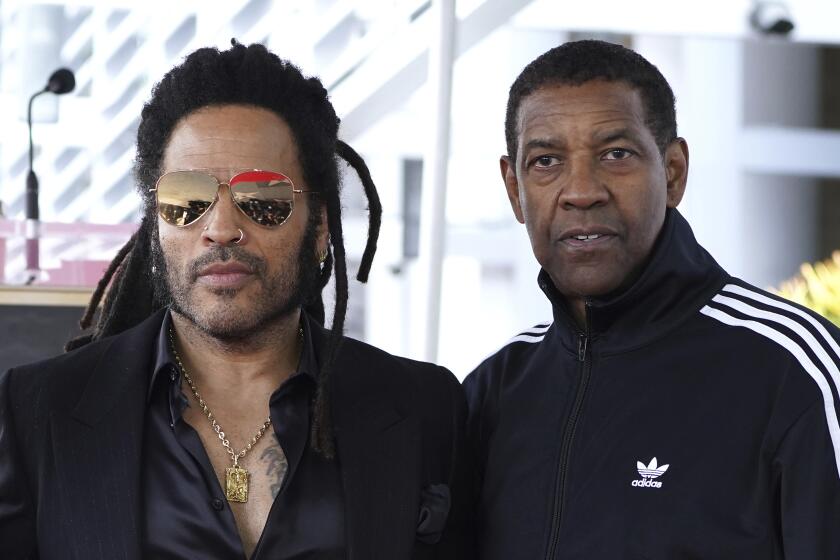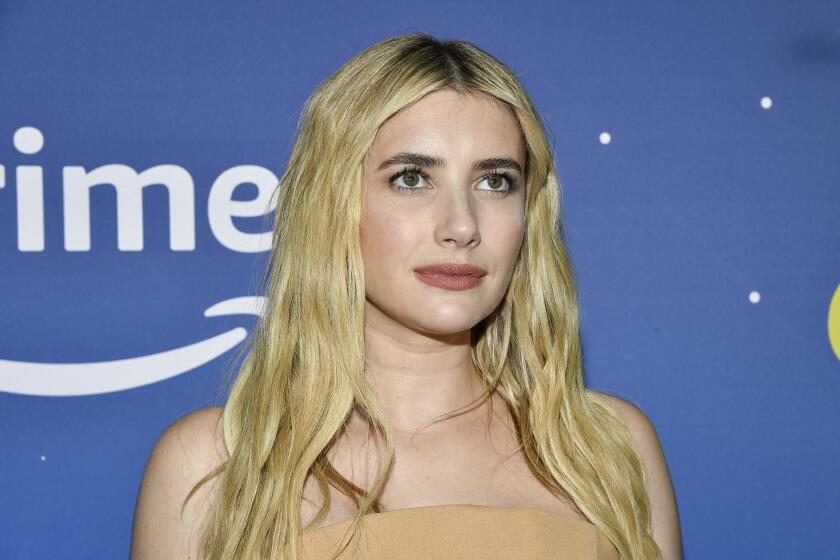A change of ‘toon
Feature film animation traditionally has been among the most labor-intensive art forms on Earth, requiring an army of artists and technicians, all cubicled into one main facility, each one executing his or her particular function. With the crash of the so-called toon boom in the 1990s, however, production models are evolving in favor of independent animated films made with vastly smaller crews and utilizing a worldwide network of artists, connected only through cyberspace, who likely will never meet.
Notwithstanding the ogre-size success of PDI/DreamWorks’ computer-animated “Shrek 2,” which at $400 million and counting has left all other animated films in the dust, several smaller-scale, independently produced films are on the horizon. All are being made through with lower budgets and shorter schedules than the major studios’.
“I really feel like the days of large studio overhead, like Disney and DreamWorks and Warner Bros. have had in the past with their animated features, has pretty much passed, and I don’t foresee it coming back in a large way,” says Tony Bancroft, an ex-Disneyite who co-directed “Mulan” through the company’s shuttered Florida studio and served as animation supervisor for “Stuart Little 2.”
Bancroft is among the many artists who have left the major studios -- by choice or otherwise -- and launched independent animation companies. He is currently preparing two features through his Burbank-based Toonacious Family Entertainment.
Even with their own financing, however, what seems clear is that indies still will need to rely on major studios for distribution and marketing.
“Releasing animated movies is a big, big process,” says Terry Thoren, president of Klasky Csupo Inc., whose theatrical films to date, including “The Rugrats Movie,” have been produced with Nickelodeon Movies and released through Viacom sibling Paramount. Thoren likens producing an animated film without studio assistance to “deciding to produce a new cereal and wanting to go to Vons and get shelf space.”
In terms of cost, computer-generated imagery, also called computer graphics or CG, “is one of the few areas of the film business where the prices are going down rather than up,” says “Shrek” producer John H. Williams. Williams is developing and producing a slate of 3-D animated features through his Vanguard Films, which has assembled a digital animation studio in London. One, “Valiant,” a $40-million comedy about a carrier pigeon during World War II, is the first project covered under a deal with Walt Disney Pictures.
“We could literally go to CompUSA and buy off-the-shelf pieces of hardware and software and achieve what six or seven years ago a major studio would have spent millions of dollars to get,” says David Lovegren, who, along with Sue Bea Montgomery, Preston Stutzman, Tony Leech and Todd and Cory Edwards, is behind “Hoodwinked,” a CG-animated detective-story take on Little Red Riding Hood.
Moving forward more visibly is “Delgo,” a CG fantasy adventure being produced by Atlanta-based Fathom Studios, a production subsidiary of Macquarium Intelligent Communications. “Delgo” concerns a troubled teen who, with a band of misfit friends, strives to save an equally troubled world. Co-director Marc Adler describes it as “ ‘Shrek’ meets ‘Lord of the Rings.’ ”
Many of the indies, including Santa Monica-based Threshold Digital Research Labs, which is producing its first digitally animated feature, “Foodfight!,” for a proposed 2005 release, are striving to avoid the kind of deal Pixar had with Disney.
“We’ve turned down so many deals that would have given us great producer fees but required us to give up ownership and control of the movie, and we just keep saying no,” says Threshold Chairman Lawrence Kasanoff, who is also directing the $50-million, independently financed comedy, set in a grocery store in which the products come alive at closing time.
While $50 million is hardly small change, it is still less than half what Disney’s hand-drawn “Home on the Range” cost. A strategic alliance with IBM is keeping Threshold’s tech pipeline flowing, and outsourcing footage to independent artists keeps staff overhead down. “We have animators working for us all over the world who we turn on and off every day,” Kasanoff says.
Outsourcing artwork is not so much a plus for indie animation production as a must. “Our existing technology team created a network of over 2,000 small animation studios from which they can contract computer graphic artists to create digital animation,” says Steve Brown, chairman of New Jersey-based IDT Entertainment, which has several 3-D feature projects on the boards, including “Gene Roddenberry’s Starpoint Academy” and a yet-to-be-titled film directed by Christopher Reeve.
Calling the subsidiary of telecommunications giant IDT Corp. an indie is something of a stretch, particularly when comparing it with outfits like Toonacious. Under Brown and Chief Executive Morris Berger, IDT Entertainment’s network extends to more than 120 countries and includes in-house DPS/Film Roman and Vancouver’s Mainframe Entertainment. That production pipeline is being used for “Happily N’Ever After,” a twisted action/adventure take on the tales of the Brothers Grimm featuring the voices of Sigourney Weaver, Sarah Michelle Gellar and George Carlin, among others. It is being financed by Berlin Animation Film and produced by Vanguard’s Williams, who also has a deal with IDT.
One of the more striking forays into the American animation marketplace is coming from H2V, a global company with studios in Canada, Spain and Argentina, which is producing three 2-D films for less than $6 million each, all geared to an adult audience and offering a Latin perspective. The first one out will be “Manga Latina,” which is described as the “first ever animated urban Hispanic oriented, dark-humored feature film.” Klasky Csupo is also edging into adult animation through its Global Tantrum banner. The studio is developing “The Way the Dead Love,” a 2-D, potentially R-rated film based on the writings of Charles Bukowski. When finished (probably in 2006), it will fall outside the Nickelodeon/Paramount relationship.
The next two years will see their fair share of studio-made releases, including DreamWorks’ “Shark Tale,” Universal’s “Curious George” and Disney’s “Chicken Little.” Even more films, though, are being made through the sort of studio/digital shop partnership pioneered by Disney and Pixar: Fox/Blue Sky’s “Robots,” Disney/Pixar’s “The Incredibles” and “Cars,” and Warners/Sony Imageworks’ “The Polar Express.” (Imageworks is also animating “Open Season,” the first feature for Sony Pictures Animation, but the division’s Executive Vice President Sandra Rabins says in-house features will be only about 25% of SPI’s work.)
And there will always be room for the relatively inexpensive TV-to-movie bump-ups, such as “The SpongeBob SquarePants Movie,” as well as a growing market for foreign pickups, like “Ghost in the Shell 2: Innocence,” which DreamWorks is releasing via its Go Fish banner.
While new indie toon shops continue to appear -- the most recent being Whamaphram Productions, which rose from the ashes of the Secret Lab, Disney’s former in-house effects shop -- there are some who still champion the big studio system.
“First and foremost is that the expertise and experience is here,” says Ann Daly, head of DreamWorks Animation, which survived the toon boom bust largely intact. “You can build a career path for the artists and talented technology people so that they get better and better at what they do.”
But Daly also sees the indie tide as a positive thing. “I’d like to think that the marketplace will be accepting of a diverse number of animated films. It would be good for all of us.”
More to Read
The biggest entertainment stories
Get our big stories about Hollywood, film, television, music, arts, culture and more right in your inbox as soon as they publish.
You may occasionally receive promotional content from the Los Angeles Times.






